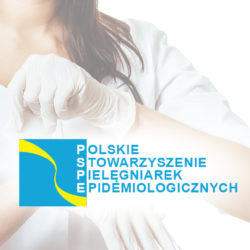The effectiveness of various alcohols as components of preparations for disinfection of hands and surfaces in the fight against the SARS-CoV-2 epidemic
Justyna Piwowarczyk
ORCID: 0000-0001-7365-3385
Medilab Sp. z o.o. ul. Niedźwiedzia 60, 15-531 Białystok, e-mail: justyna.piwowarczyk@medilab.pl
*według kolejności na liście Autorów
Wpłynęło: 24.06.2020
Zaakceptowano: 18.07.2020
DOI: dx.doi.org/10.15374/FZ2020020
Forum Zakażeń 2020;11(3):143–147
Streszczenie: Zapobieganie rozprzestrzenianiu się chorób zakaźnych poprzez stosowanie różnych substancji dezynfekujących było praktykowane od zamierzchłych czasów. Aktywność środków dezynfekcyjnych skierowana jest przede wszystkim na struktury, które odpowiadają za utrzymanie ogólnej integralności i funkcjonalności mikroorganizmu. Środki stosowane w dezynfekcji są substancjami należącymi do różnych klas związków chemicznych. Jednymi z najbardziej powszechnych i uniwersalnych są alkohole: izopropylowy, etylowy, benzylowy oraz pochodne alkoholowe, tj. fenoksyetanol czy fenoksypropanol. Roztwory alkoholi wykazują szybkie działanie bakteriobójcze oraz grzybobójcze, nie działają jednak na spory bakteryjne i słabo oddziałują na wirusy bezotoczkowe. W związku z szerzącą się epidemią COVID-19 pojawiają się wątpliwości dotyczące skuteczności produktów przeznaczonych do dezynfekcji rąk i powierzchni, zawierających w swoim składzie alkohole. Czas zagrożenia epidemicznego zobowiązuje do używania specjalnych produktów przeznaczonych do obszaru medycznego, prawidłowo przebadanych i zarejestrowanych. Za skuteczność produktu odpowiada producent i profesjonalne laboratorium, które go przebadało. Aby mieć pewność, że preparat do dezynfekcji jest skuteczny w ograniczaniu rozprzestrzeniania się SARS-CoV-2, należy sprawdzić czy została przebadana jego skuteczność według ustalonej, powtarzalnej i akredytowanej procedury. W warunkach polskich taką metodykę badania skuteczności bójczej preparatów do dezynfekcji reprezentują normy europejskie zawarte w normie nadrzędnej EN 14885. W okresie epidemii stosowanie produktów o niepotwierdzonej skuteczności może wpłynąć negatywnie na bezpieczeństwo pacjentów i personelu.
Słowa kluczowe: alkohol, dezynfekcja, normy europejskie, SARS-CoV-2, skuteczność mikrobiologiczna
Abstract: Preventing the spread of infectious diseases through the use of various disinfectants has been practiced since ancient times. The activity of disinfectants is primarily directed at structures that are responsible for maintaining the overall integrity and functionality of the microorganism. Disinfectants are substances that belong to different classes of chemical compounds. One of the most common and universal are alcohols: isopropyl, ethyl, benzyl and alcohol derivatives such as phenoxyethanol or phenoxypropanol. Alcohol solutions show fast bactericidal and fungicidal activity, but they do not act on bacterial spores and weakly affect non-enveloped viruses. Due to the spreading COVID-19 epidemic, there are doubts regarding the effectiveness of products containing alcohol intended for disinfection of hands and surfaces. In the medical area, and in particular during an epidemic threat, we are required to use products intended for the medical field, properly tested and registered. The product manufacturer and professional testing laboratory are responsible for the product’s effectiveness. To make sure that the disinfecting preparation is effective in limiting the spread of SARS-CoV-2, you should check whether its effectiveness has been tested according to a set, repeatable and accredited procedure. In Polish conditions, this methodology for testing the effectiveness of the germicidal preparations for disinfection is represented by European standards contained in the superior standard EN 14885. In an epidemic condition, the use of products with unconfirmed efficacy may adversely affect the safety of patients and staff.
Key words: alcohol, disinfection, European standards, microbiological effectiveness, SARS-CoV-2





